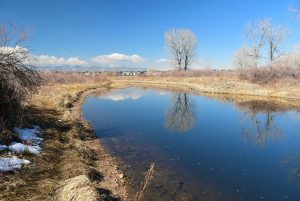Climate Migration: Coastal Buyers Flocking to Inland Havens
The effects of climate change have become impossible to ignore, and as sea levels continue to rise, coastal communities are facing the threat of displacement. In response, many residents are choosing to migrate to inland havens, seeking refuge from the encroaching waters. But there’s a catch – these climate migrants are not just any group of people. They are buyers, looking to invest in new homes and properties. And this trend is not limited to one specific area or region. Instead, it is a phenomenon that is being seen all across the world, as coastal buyers flock to inland areas in search of a safer and more secure future. Let’s take a closer look at this growing movement known as “climate migration” and the implications it has for both coastal and inland communities.
Understanding Climate Migration
Climate migration, also known as climate-induced migration, is the movement of people from one geographic region to another as a result of the impacts of climate change. These impacts can include sea level rise, extreme weather events, and water scarcity, among others. As these changes make certain areas unsuitable for human habitation, people are forced to relocate to more hospitable locations.
Historically, climate migration has predominantly been associated with developing countries, where communities are more vulnerable to the effects of climate change due to factors such as poverty and lack of resources. However, as the effects of climate change become more severe and widespread, even developed countries are experiencing an increase in climate migration. And one of the main driving forces behind this movement is the threat of rising sea levels.
Coastal Buyers Flocking to Inland Havens
As sea levels continue to rise, coastal communities are facing a somber reality – their homes are at risk of being swallowed by the ocean. In fact, a study by the Union of Concerned Scientists estimates that by the year 2100, as many as 2.5 million homes and properties in the United States alone could be subject to chronic flooding.
In response to this threat, many homeowners and buyers in coastal areas are seeking refuge in inland havens, areas that are not as susceptible to the impacts of sea level rise. These inland havens are often located in higher elevations, away from the coast and thus less vulnerable to flooding. And as more people flock to these areas, homeowners and sellers in inland communities are seeing an increase in demand for their properties.
According to a report by the National Association of Realtors, counties that are more than 50 miles away from the coast are seeing an increase in home sales, with many buyers specifically citing sea level rise and its potential impacts as a motivating factor for their relocation. This trend is most pronounced in areas that have a higher elevation, such as the Appalachian Mountains or the Colorado Rockies.
The Implications of Climate Migration
For Coastal Communities
The influx of coastal buyers to inland areas has a direct impact on coastal communities. As more people migrate to safer locations, the population and economy of these coastal towns and cities will decline. This could result in a decrease in property values and a loss of tax revenue for these communities, making it even more challenging for them to adapt to the effects of climate change.
In addition, as coastal buyers leave, the demographics of these coastal communities will also change. This could lead to a loss of cultural identity and a decrease in social cohesion, as families and communities are forced to leave their homes and relocate elsewhere.
For Inland Communities
On the other hand, the influx of coastal buyers could have a positive impact on inland communities. The increased demand for properties in these areas could lead to an increase in home values and an economic boost for local businesses. However, this could also lead to displacement and gentrification, as property values rise and longtime residents are unable to afford their homes.
The increase in population could also put a strain on resources and infrastructure in these inland areas. This could result in the need for new developments and construction to accommodate the influx of people, causing potential environmental impacts such as deforestation and loss of natural habitats.
A Call for Action
The trend of coastal buyers flocking to inland havens is a clear indication that the effects of climate change are already impacting our societies. As sea levels continue to rise, more people will be forced to migrate, and the implications of this movement will be felt by both coastal and inland communities. It is clear that urgent action is needed to mitigate the impacts of climate change and ensure a secure future for all.
We must work towards reducing our carbon footprint and implementing measures to adapt to the effects of climate change. This includes investing in sustainable infrastructure and practices, and supporting the development of policies that address the needs of both coastal and inland communities. By taking action now, we can help prevent the displacement of millions of people and create a more resilient and sustainable future for all.
Conclusion
The phenomenon of climate migration is a reality we cannot ignore. As sea levels continue to rise, coastal buyers are flocking to inland havens in search of a safer and more secure future. This trend has significant implications for both coastal and inland communities, and it is essential that we take action to address the root causes of climate change and ensure a sustainable and equitable future for all.









